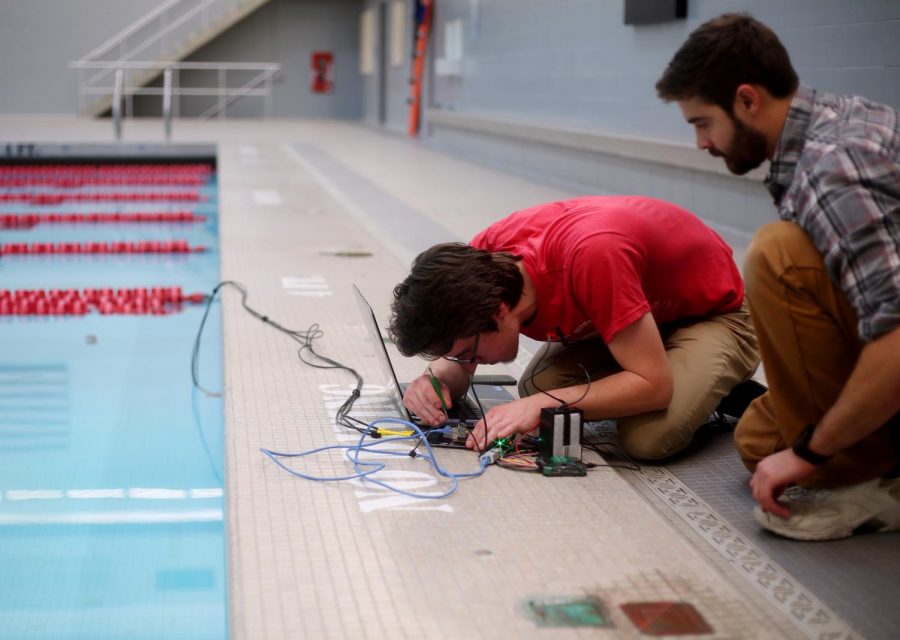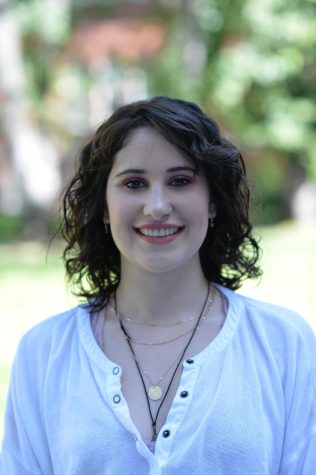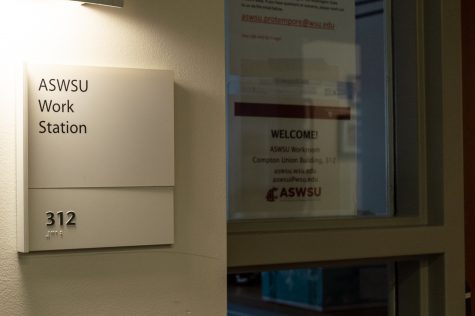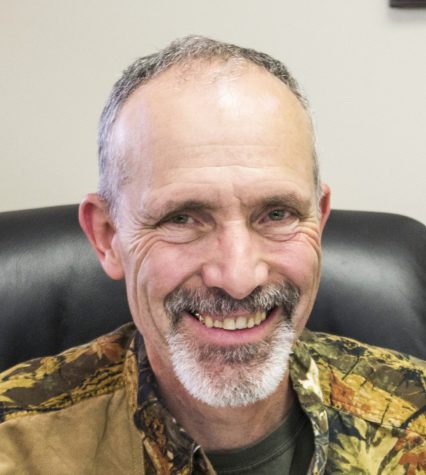Club builds self-navigating sub
Submarine named Cobalt designed to compete, locate objects underwater like buoys before other teams
ABBY LINNENKOHL | The Daily Evergreen
RoboSub Club treasurer Ryan Summers and club member James Irwin fine tune the circuit board for the hydrophones for their robotic submarine at Gibb Pool. The submarine detects soundwaves to follow underwater.
December 4, 2017
The WSU RoboSub Club tested their submarine, a two-year-old project they named Cobalt, at Gibb Pool on Saturday.
President Daylan Kelting said scheduling tests was one of the largest challenges of the past years. When he became president, he sought to make tests more frequent, but more accessible for members who could not attend every one.
Pool tests last almost four hours, Kelting said. They spend this time setting up path markers and hydrophones, which can detect sound underwater. The submarine will find and follow them as it travels under the surface.
“The pool tests are a way to figure out what we’re doing right and what went wrong,” Kelting said. “There’s definitely a correlation between testing hours and submarine performance, so we try to test it a lot.”
Almost all members have been involved for over two years and thus removes the need to recycle members and engineering knowledge once seniors graduate.
“Once you start figuring things out,” Kelting said, “you can really propel further in the competition.”

Cobalt, the RoboSub, autonomously moves through the water during the pool test Saturday in the Gibb Pool.
The RoboSub Competition occurs every July, held usually somewhere in Southern California. Submarines are subjected to an obstacle course under water, with tasks ranging from hitting buoys and finding sonar objects before other teams, Kelting said.
The most difficult challenge is submarines have to be totally autonomous, Kelting said. The team members remove the cable connecting the submarine’s program to their computers, lower it into the water and hope for the best.
“It’s incredibly nerve-wracking because once it’s in the water, there’s nothing you can do,” Kelting said.
There is a strong sense of community amongst all teams in the competition, club member James Irwin said. This is his fifth year being involved in this club.
“It’s not really a competitive competition,” Irwin said. “Everyone is in the same position as you so there is a lot of cooperation between the teams.”
About 50 or so teams compete every year, Irwin said. The competition is not limited to universities—high schools and international robotics teams also join. WSU’s RoboSub Club spent the past few years in the lower to middle rankings of the teams, but they hope this year they can make it to the top eight.
“We’re usually worried about qualifying,” Irwin said, “but this year we know we’ll be able to clinch it. It’s exciting because we have a chance of getting higher scores.”
The competition guidelines are now more difficult because the participants have improved, Kelting said. As teams in general increase their scores, the rules become stricter as a way to keep the challenge alive.
For Sean Kallaher, computer science team lead, the increasing difficulty is part of the reason he joined in the first place.
“In a classroom, you’re given a problem that always has a solution,” Kallaher said. “Working on something this complicated, you’re presented with problems that may not even have a solution at all.”
The RoboSub Club meets at 1 p.m. on Saturdays in the Intelligent Robotics Learning Laboratory in Dana Hall, Room 3.





















